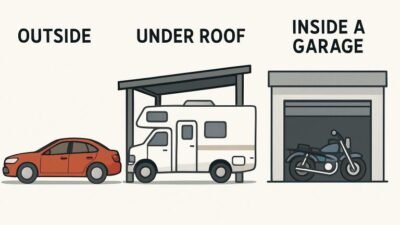Have you just received your learner’s permit or passed your driving test? Getting ready to drive on your own can be both exciting and nerve-wracking. You might feel thrilled to have your own freedom, but also a little nervous about making mistakes. That’s completely normal. Driving is a big responsibility, and being prepared before you get behind the wheel makes a big difference.
In this blog, we will share the most important first steps every new driver should take before hitting the road.
Learn the Rules of the Road
Before you start driving regularly, you need to know the rules that keep everyone safe. This includes traffic signs, speed limits, and laws about right of way. Spend time reading your state’s driver handbook or take online practice tests. These tools help you understand how to make smart decisions in real situations. Many accidents happen because drivers don’t know the law, so learning the rules ahead of time protects you and others.
It’s also important to know local driving laws. Different states may have rules that vary, such as turning right at a red light or using cell phones while driving. By reviewing your state’s guidelines, you’ll avoid tickets and learn what’s expected of you. Learning isn’t just for passing the test—it’s for becoming a better driver overall.
Complete Driver’s Education
Taking a certified driver’s education course is one of the most valuable steps for beginners. This course teaches basic driving skills, traffic laws, and safe driving habits. It also prepares you for the written and road tests you need to pass. Most states require teens under a certain age to complete driver’s ed before getting a license. It’s not just about meeting requirements—it helps you build confidence through practice and feedback from a trained instructor.
If you’re wondering how long is drivers ed, it depends on your state. For example, in Texas, the course includes 32 hours of classroom instruction and 14 hours of behind-the-wheel training. You can choose to complete this through a traditional school or an online program. Online options are flexible and let you learn at your own pace, which is great for busy students. Whether you’re learning in person or online, driver’s ed gives you the tools you need to start driving safely.
Practice Driving With a Supervisor
Getting hands-on practice is just as important as classroom learning. Start by driving with a parent, guardian, or another licensed adult. Make sure the person you choose is patient and experienced. Try practicing in quiet neighborhoods or empty parking lots before heading onto busier roads. Begin with basic skills like turning, stopping, and parking. Then work up to more advanced situations like merging onto highways or driving at night.
The more you practice, the more confident you’ll become. Aim for a variety of conditions—rainy days, different times of day, and light traffic. These situations help you adjust to real-life challenges. Many states have a minimum number of supervised hours required before you can take the driving test. Keeping a log of your practice hours can help track your progress. Every time you drive with a supervisor, you’re building the skills that make you a smarter and safer driver.
Get Familiar With Your Vehicle
Before driving alone, you should understand how your specific vehicle works. Every car is slightly different. Learn how to adjust your mirrors, move the seat, and find controls like the headlights and windshield wipers. Know how to use turn signals, the horn, and the emergency brake. Read your vehicle’s manual to learn about dashboard lights and warning signs.
Check that everything in your car is working properly. Test the brakes, lights, and signals before driving. Make sure your tires have enough air and that your mirrors give you a full view of the road. Familiarity with your car gives you more confidence behind the wheel. You’ll know where everything is and won’t need to fumble around while driving. Feeling comfortable with your vehicle is an important part of becoming a safe driver.
Create a Safety Checklist
Before each drive, it’s smart to run through a quick checklist. Start by checking your mirrors and seatbelt. Make sure your phone is put away and your music is at a reasonable volume. Keep your focus on driving—distractions can be dangerous, especially when you’re still learning. Take a moment to look at your fuel level and any dashboard lights that may be on.
Plan your route before you leave. If you’re using a GPS, set it up before putting the car in drive. If you’re unsure about your destination, review the directions ahead of time. Also, check the weather forecast. Driving in rain or fog requires extra caution, and you may want to delay your trip if the conditions are bad. A safety checklist helps you start each trip on the right foot and reduces your chances of having problems on the road.
Understand Basic Car Maintenance
You don’t need to be a mechanic, but knowing a few basic things about car maintenance helps you stay safe. Learn how to check your oil and understand when it needs changing. Check your tire pressure regularly and know how to refill them if they’re low. Learn how to jump-start a battery and recognize common warning lights on your dashboard.
Regular maintenance keeps your car running smoothly. You should also keep emergency items in your trunk, like a tire jack, jumper cables, a flashlight, and a first aid kit. If your car breaks down or you get a flat tire, having the right tools and knowing what to do can help you avoid getting stuck. Learning these basics now prepares you for problems later and gives you peace of mind when driving on your own.
In conclusion, becoming a licensed driver is a major step in your life. It brings freedom, but it also comes with responsibility. Taking the time to prepare before driving alone helps you avoid mistakes and feel more confident on the road. You don’t need to rush the process. Learn at your own pace, ask for help when needed, and focus on building safe habits that will last a lifetime. Driving can be a great experience when you’re prepared. So take these first steps seriously—they’ll help you become the kind of driver others can trust and respect.



